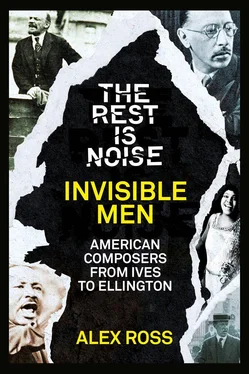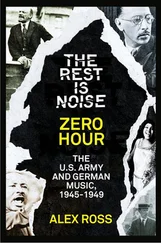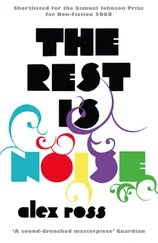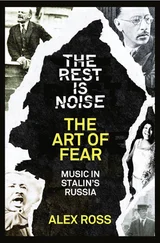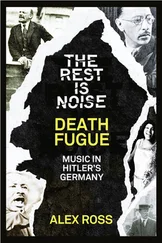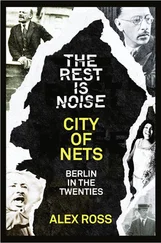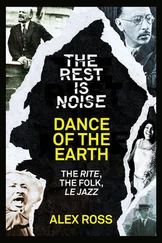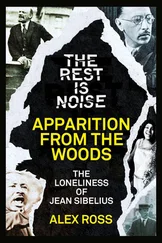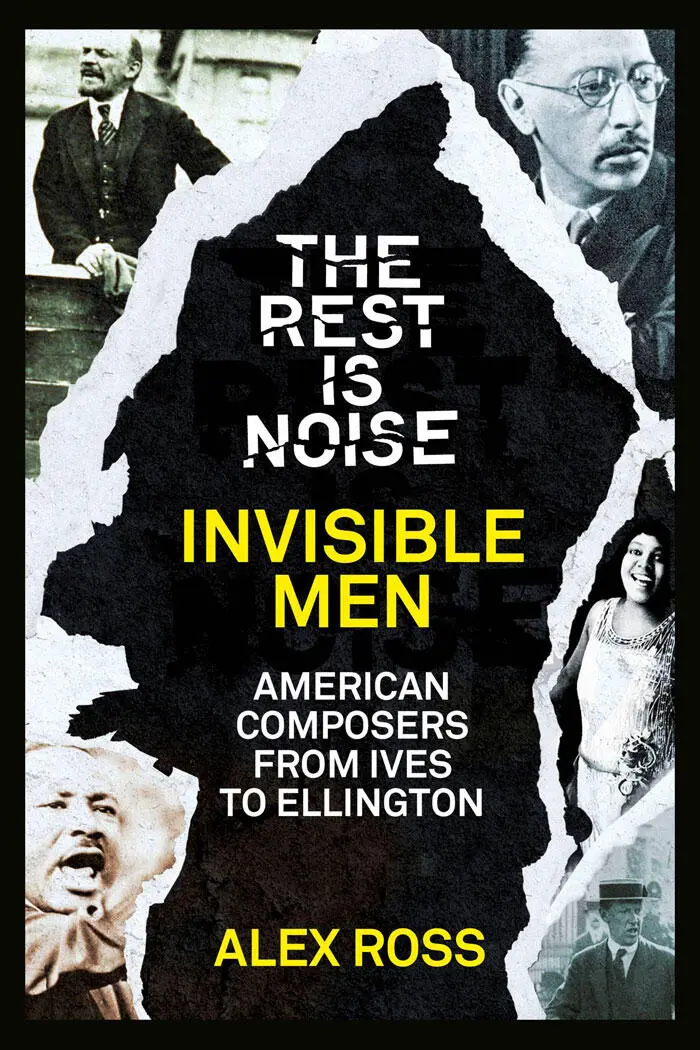
This is a chapter from Alex Ross's groundbreaking history of 20th century classical music, The Rest is Noise .
It is released as a special stand-alone ebook to celebrate a year-long festival at the Southbank Centre, inspired by the book. The festival consists of a series of themed concerts. Read this chapter if you're attending concerts in the episode America: a new world discovers its voice.
Alex Ross, music critic for the New Yorker , is the recipient of numerous awards for his work, including an Arts and Letters Award from the American Academy of Arts and Letters, the Belmont Prize in Germany and a MacArthur Fellowship. The Rest is Noise was his first book and garnered huge critical acclaim and a number of awards, including the Guardian First Book Award and the National Book Critics Circle Award. He is also the author of Listen to This.
INVISIBLE MEN
American Composers from Ives to Ellington
From The Rest Is Noise by Alex Ross

Contents
Invisible Men
Notes
Suggested Listening and Reading
Copyright
About the Publisher
4 INVISIBLE MEN
American Composers from Ives to Ellington
To understand the cultural unease that gripped composers in the Roaring Twenties, one need only read the work of Carl Van Vechten, the American critic, novelist, and social gadfly who, in the 1920s, more or less defected from classical music to jazz and blues. The writer started out as a second-string music critic at the New York Times, dutifully chronicling the city’s concert life in the years before the First World War. During an extended stay in Paris, he warmed to the European moderns and witnessed the riot of the Rite in the company of Gertrude Stein. By the end of the war, though, Van Vechten was getting his kicks chiefly from popular music, and in a 1917 essay he predicted that Irving Berlin and other Tin Pan Alley songwriters would be considered “the true grandfathers of the Great American Composer of the year 2001.” Finally, he pledged his allegiance to African-American culture, writing off concert music as a spent force. In the controversial 1926 novel Nigger Heaven, he observed that black artists were in complete possession of the “primitive birthright ... that all the civilized races were struggling to get back to—this fact explained the art of a Picasso or a Stravinsky.”
The writings of Van Vechten, Gilbert Seldes, and other rebellious young American intellectuals of the twenties show a paradigm shift under way. They depict popular artists not as entertainers but as major artists, modernists from the social margins. In the twenties, for the first time in history, classical composers lacked assurance that they were the sole guardians of the grail of progress. Other innovators and progenitors were emerging. They were American. They often lacked the polish of a conservatory education. And, increasingly, they were black.
One nineteenth-century composer saw this change coming, or at least sensed it. In 1892, the Czech master Antonín Dvořák, whose feeling for his native culture had inspired the young Janáček, went to New York to teach at the newly instituted National Conservatory. A man of rural peasant origins, Dvořák had few prejudices about the social background or skin color of prospective talent. In Manhattan he befriended the young black singer and composer Harry T. Burleigh, who introduced him to the African-American spirituals. Dvořák decided that this music held the key to America’s musical future. He began plotting a new symphonic work that would draw on African-American and Native American material: the mighty Ninth Symphony, subtitled “From the New World.” With the help of a ghostwriter, Dvořák also aired his views in public, in an article titled “Real Value of Negro Melodies,” which appeared in the New York Herald on May 21, 1893:
I am now satisfied that the future music of this country must be founded upon what are called the negro melodies. This must be the real foundation of any serious and original school of composition to be developed in the United States ... All of the great musicians have borrowed from the songs of the common people. Beethoven’s most charming scherzo is based upon what might now be considered a skillfully handled negro melody ... In the negro melodies of America I discover all that is needed for a great and noble school of music. They are pathetic, tender, passionate, melancholy, solemn, religious, bold, merry, gay or what you will. It is music that suits itself to any mood or any purpose. There is nothing in the whole range of composition that cannot be supplied with themes from this source.
At a time when lynching was a social sport in the South, and in a year when excursion trains brought ten thousand people to Paris, Texas, so that they could watch a black man being paraded through town, tortured, and burned at the stake, Dvořák’s embrace of African-American spirituals was a notable gesture. The visiting celebrity didn’t just urge white composers to make use of black material; he promoted blacks themselves as composers. Most provocative of all was his imputation of a “Negro” strain in Beethoven—a heresy against the Aryan philosophies that were gaining ground in Europe.
Black music is so intertwined with the wider history of American music that the story of the one is to a great extent the story of the other. Everything runs along the color line, as W. E. B. Du Bois wrote in The Souls of Black Folk. Still, it’s worth asking why the music of 10 percent of the population should have had such influence.
In 1939, a Harvard undergraduate named Leonard Bernstein tried to give an answer, in a paper titled “The Absorption of Race Elements into American Music.” Great music in the European tradition, young Bernstein declared, had grown organically from national sources, both in a “material” sense (folk tunes serving as sources for composition) and in a “spiritual” sense (folkish music speaking for the ethos of a place). Bernstein’s two-tiered conception, which acknowledges in equal mea sure music’s autonomy and its social function, makes a good stab at explaining why black music conquered the more open-minded precincts of white America. First, it made a phenomenal sound. The characteristic devices of African-American musicking—the bending and breaking of diatonic scales, the distortion of instrumental timbre, the layering of rhythms, the blurring of the distinction between verbal and nonverbal sound—opened new dimensions in musical space, a realm beyond the written notes. Second, black music compelled attention as a document of spiritual crisis and renewal. It memorialized the wound at the heart of the national experience—the crime of slavery—and it transcended that suffering with acts of individual self-expression and collective affirmation. Thus, black music fulfilled Bernstein’s demand for a “common American musical material.”
What Dvořák did not foresee, and what even the cooler-than-thou Bernstein had trouble grasping, was that the “great and noble school of music” would consist not of classical compositions but of ragtime, jazz, blues, swing, R & B, rock ’n’ roll, funk, soul, hip-hop, and whatever’s next. Many pioneers of black music might have had major classical careers if the stage door of Carnegie Hall had been open to them, but, with few exceptions, it was not. As the scholar Paul Lopes writes, “The limited resources and opportunities for black artists to perform and create cultivated music for either black or white audiences ... forced them into a more immediate relationship with the American vernacular.” Soon, jazz had its own canon of masters, its own dialectic of establishment and avant-garde: Armstrong the originator, Ellington the classicist, Charlie Parker the revolution-ary, and so on. A young Mahler of Harlem had little to gain by going downtown.
Читать дальше
